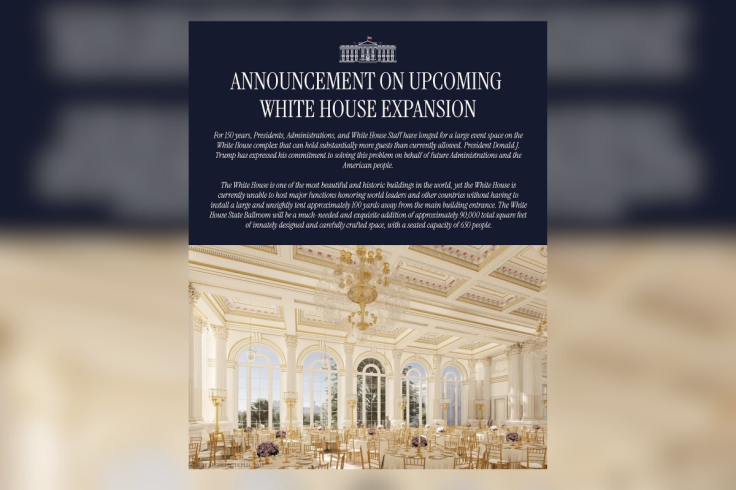Trump's Ballroom Boast Comes True—£151m White House Makeover Includes 650-Seat Venue
The White House will see its first major structural addition since 1948, with construction set to begin in September.

President Donald Trump has revealed plans for the most ambitious White House expansion in over seven decades: a $200m (£157m) privately funded ballroom, set to break ground in September 2025.
Dubbed the White House State Ballroom, the proposed structure will span 90,000 square feet and accommodate up to 650 guests, replacing the current East Wing.
Trump, who first floated the idea in 2016, says the ballroom will end the need for unsightly outdoor tents at state events. Designed to reflect the opulence of his Mar-a-Lago estate, the ballroom will be the most significant structural change to the Executive Mansion since the addition of the Truman Balcony in 1948.
What Will Be Built?
According to the BBC, the new hall will feature neoclassical architecture, Corinthian columns, crystal chandeliers, and arched windows to match the aesthetic of the main residence. The ballroom will effectively double the size of the current East Wing, where the offices of the First Lady and White House Military Office are currently located.
Renderings shared by the White House show an ornate interior that echoes Trump's long-standing preference for gold tones and grand design. Although the ballroom will stand apart from the main residence, it will be stylistically aligned to maintain visual continuity.
Where and When Will Construction Begin?
Construction is expected to begin in autumn 2025 and be completed before the end of Trump's current term in 2029. The ballroom will replace the East Wing footprint, requiring temporary relocation of First Lady Melania Trump's staff and other offices.
The renovation will not affect the main residential structure, and historic preservation protocols will reportedly be followed to protect adjacent areas.
Who Is Leading the Project?
Trump, who made his fortune in real estate, has taken a personal interest in the project. He described the ballroom as both a practical solution to hosting large events and a legacy addition for future presidents.
The architectural plans are being handled by McCrery Architects, with Clark Construction and AECOM leading engineering and construction efforts. White House Press Secretary Karoline Leavitt said the expansion is 'a much-needed and exquisite addition' and will be funded by Trump and unnamed 'patriot donors', without drawing on taxpayer money.
Why the Expansion Is Controversial
The project has sparked debate about the line between private funding and public architecture. Some critics argue that—even without federal dollars—altering the iconic structure risks diminishing its symbolism as a people's house.
The ballroom follows a broader trend of Trump-era aesthetic revamps, including the gold-accented Oval Office, the installation of massive flagpoles, and the paving over of the Rose Garden. While supporters praise the upgrades as visionary, critics see them as a departure from presidential tradition.
What Do Preservationists Say?
No demolitions are currently planned, and the White House says all building codes and preservation standards will be upheld. However, officials from agencies such as the Transportation Security Administration and the National Park Service may become involved as the plans progress.
Leslie Greene Bowman, a long-serving member of the Committee for the Preservation of the White House, told the BBC:
'I hope and trust that any proposed changes will honour and preserve the existing walls that have witnessed so much history. They are precious vessels of our legacy as a democracy.'
What Happens Next?
Designs for the ballroom are already live on the White House website, and final blueprints are expected before construction begins. Further scrutiny may come from Congress and preservation experts, especially as the structure replaces a historically significant wing.
The White House said the addition will 'honour past traditions while offering modern utility' and serve as a prestigious space for state dinners, reducing the logistical burden of erecting outdoor tents.
With construction due to begin in just a few months, Trump's ballroom is set to become a defining legacy of his second term—and a new chapter in the evolving history of 1600 Pennsylvania Avenue.
© Copyright IBTimes 2025. All rights reserved.




















